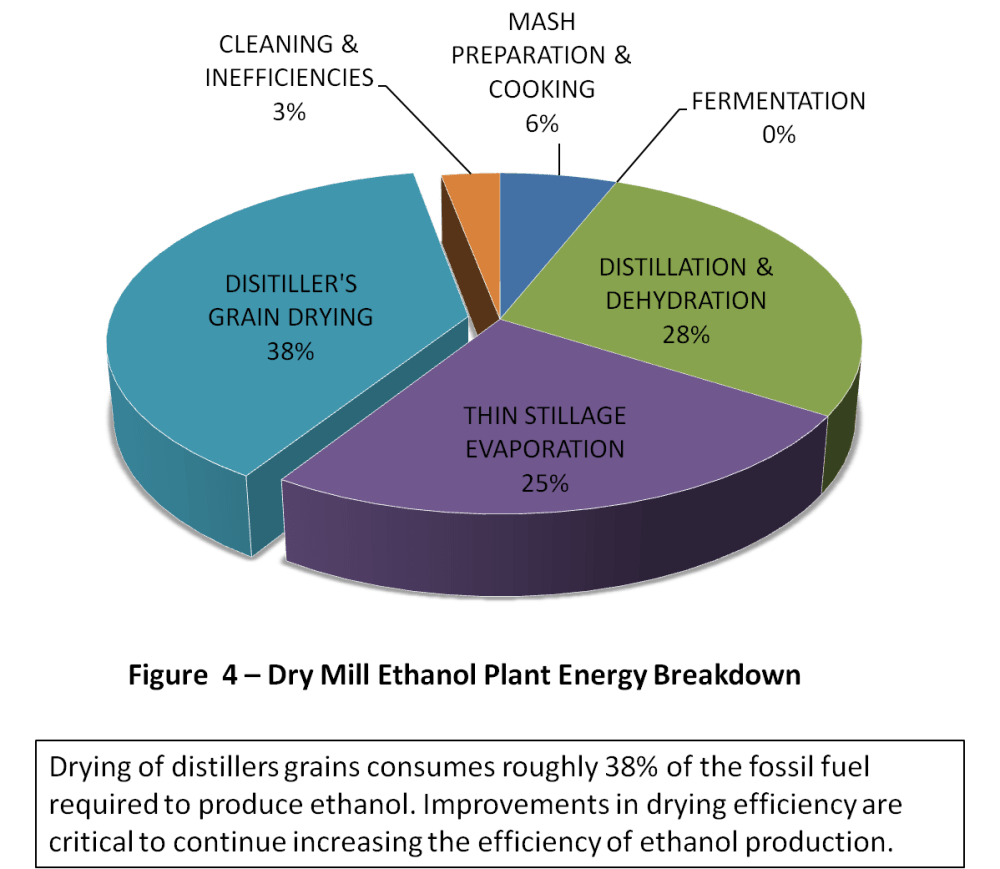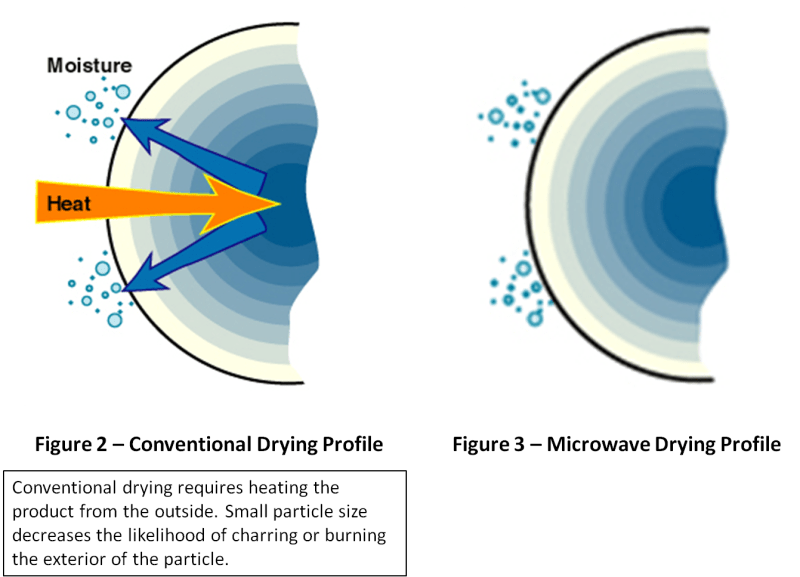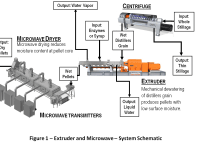INTRODUCTION
Bio-refineries are analogous to petroleum refineries, which produce multiple fuels and products from crude petroleum. By producing multiple products, a bio-refinery takes advantage of the various elements in biomass and their components, maximizing their value.
For example, starch consumed during grain-based ethanol production concentrates protein and other nutrients, producing a high value animal feed as a co-product. This feed product—commonly referred to as Dried Distiller’s Grain with Solubles (DDGS)—can be used to directly replace a portion of grain in animal diets.
ADDING VALUE
DDGS has an extended shelf-life compatible with worldwide distribution. However, the small particle size needed for conventional drying leads to logistical problems. It is common for granular DDGS to settle into a concrete-like mass during shipping. The United States Department of Agriculture (USDA) has prioritized development of DDGS pelleting techniques to create value-added DDGS. Pellets will benefit livestock producers due to their increased nutrient density and reduction of feed waste.
INNOVATION
By first extruding the wet material and then performing final drying using microwave energy, a high quality pelletized DDGS product is produced using less energy than with conventional methods. The patented process is summarized here and detailed in the Agglomeration of Wet Distillers Grains Into Pellets, US Patent 7,695,747 B2.
Twin screw type extruders allow for the removal of water vapor and volatile organic compounds from the product stream under a vacuum. (See Figure 1.)
Distiller’s grain is discharged from a centrifuge at 180°F. After entering the extruder the material is then dried, at well below atmospheric boiling temperature. The extruder is computer controlled, allowing for control of all operating parameters.
Microwave energy, an electromagnetic wave that readily passes through materials, is highly effective at causing polar water molecules to vibrate. Intermolecular friction generates heat and increases vapor pressure, effectively ‘pumping’ water to the material’s surface to then drip off or evaporate. (See Figure 3.)
For continuous processing, the pellets being dried are conveyed into a series of modular microwave cavities on a conveyor belt. The microwave cavities can be equipped with moisture, temperature and color sensors to provide control over all operating parameters of the microwave transmitters.
COST EFFECTIVENESS
In contrast to the conventional pellet mill process, forming the pellet prior to drying allows the natural binding agents in the product to form a durable pellet. Mechanical energy input into the product stream is not wasted. It maintains the product temperature while in the extruder and generates flash steam upon discharge, further drying the pellets.
The cost savings for rail transportation are documented in Modeling the Effects of Pelleting on the Logistics of Distillers Grains Shipping, Dr. Kurt Rosentrater, Bioresource Technology, December 2009.
MARKETABILITY
The rapid expansion of the ethanol industry has focused a number of trade organizations on opening new markets for DDGS as animal feed. These groups have been highly successful in expanding the use of granular DDGS. The availability of DDGS pellets should enhance these efforts due to the improved logistics and higher quality of the microwave dried product.
Like this entry?
-
About the Entrant
- Name:Russ Meier
- Type of entry:individual
- Hardware used for this entry:Dell - Vostro 1720Software used for this entry:Power Point, Auto CAD, MS Excel
- Patent status:patented








